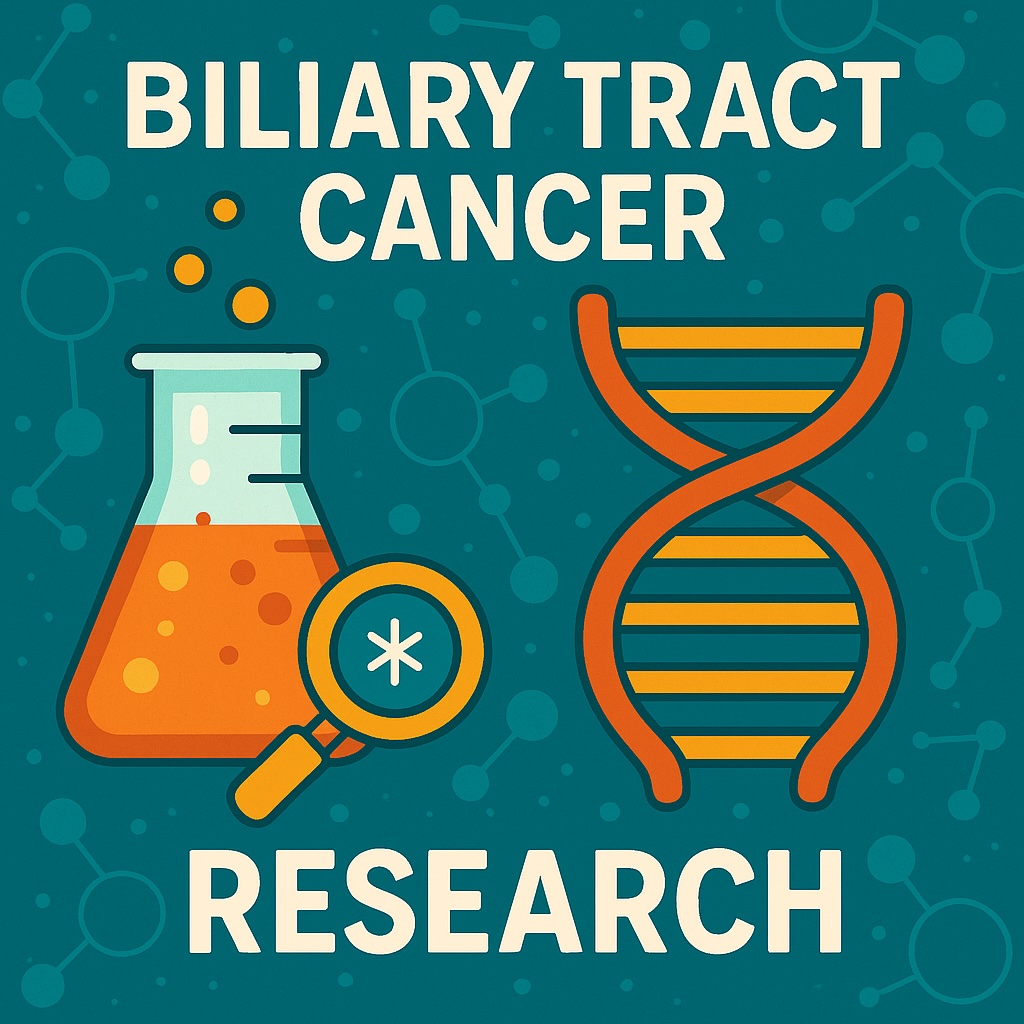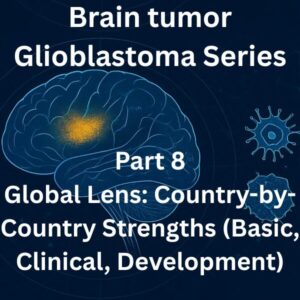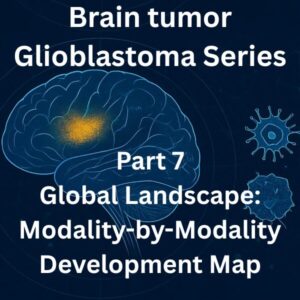Biliary tract cancer (BTC), encompassing intrahepatic and extrahepatic cholangiocarcinoma as well as gallbladder cancer, remains a highly lethal malignancy with limited treatment options. In 2025, Cancer Discovery published a landmark study, “Generation of a Biliary Tract Cancer Cell Line Atlas Identifies Molecular Subtypes and Therapeutic Targets”. This work provides a systematic molecular classification and actionable therapeutic hypotheses for BTC. In this article, I will first review the current treatment landscape and then discuss the implications of this new atlas for future drug development.
Current Standard Treatments: From Surgery to Systemic Therapy
Surgical resection remains the only curative option, yet only 20–30% of patients are resectable at diagnosis. For unresectable or advanced cases, systemic therapy is the backbone of treatment.
- First-line: Gemcitabine + Cisplatin (GC regimen), established by the ABC-02 trial.
- Second-line: FOLFOX regimen (ABC-06 trial).
- Immunotherapy: Pembrolizumab, effective in MSI-High or TMB-High subsets.
Despite these advances, median overall survival remains only 12–15 months, underscoring the need for precision-targeted strategies.
Progress in Targeted Therapy: FGFR, IDH1, HER2, MSI
Molecular profiling has revealed actionable alterations that enable precision therapies in subsets of BTC patients:
- FGFR2 fusions: Inhibitors such as pemigatinib and futibatinib are approved.
- IDH1 mutations: Ivosidenib has demonstrated clinical benefit.
- HER2 amplification/overexpression: HER2-directed therapies, including trastuzumab and ADCs (e.g., trastuzumab deruxtecan), are under clinical evaluation.
- MSI-High: Long-term responses have been achieved with checkpoint inhibitors.
However, the majority of BTC patients lack these alterations, highlighting the need for broader molecular stratification.
The Cancer Discovery Study: Building a BTC Cell Line Atlas
This study systematically established a BTC cell line atlas that integrates genomics, transcriptomics, and drug sensitivity profiling. The key outcomes include:
- Creation of the largest BTC cell line panel reflecting disease heterogeneity.
- Definition of multiple molecular subtypes beyond conventional histology.
- Linking each subtype to potential therapeutic vulnerabilities.
This atlas now serves as a preclinical platform to guide rational clinical trial design.
Molecular Subtypes and Candidate Therapeutic Targets
The atlas revealed distinct molecular subsets with druggable dependencies:
- FGFR2 fusion subtype: Sensitive to FGFR inhibitors; resistance mechanisms must be anticipated.
- IDH1 mutation subtype: Responsive to IDH1 inhibitors; potential for rational combinations with metabolic modulators.
- HER2 amplification subtype: Strong sensitivity to HER2-targeted agents and ADCs.
- Immune-enriched subtype: May benefit from immune checkpoint inhibitors.
- DNA repair deficiency subtype: Potential vulnerability to PARP inhibitors or synthetic lethality approaches.
Drug Screening and Novel Combination Strategies
The atlas incorporated systematic drug screening, identifying novel candidates and rational combinations:
- MEK/ERK pathway inhibitors: Effective in subsets with RAS/RAF signaling dependence.
- mTOR/PI3K inhibitors: Activity observed in metabolically rewired tumors.
- Antibody-drug conjugates (ADCs): HER2- and TROP2-targeted ADCs showed promising activity.
These insights will directly shape upcoming biomarker-driven clinical trials.
Clinical Translation: Toward Precision Trial Designs
Application of this atlas to trial design may involve:
- Basket and umbrella trials: Stratifying by FGFR2, IDH1, HER2, or MSI alterations.
- Standardization of biomarkers: Clear definitions using NGS, IHC, and FISH for patient enrollment.
- Dynamic stratification: Real-time adjustments based on liquid biopsy profiling during treatment.
Challenges: Resistance, Tumor Microenvironment, and Real-World Data
Targeted therapy inevitably leads to resistance. Anticipated issues include:
- Secondary mutations in FGFR or bypass pathway activation.
- Need for rational early combination regimens (e.g., FGFR + MEK inhibition).
- Integration of real-world data (RWD) to validate safety and durability.
The tumor microenvironment (TME) also remains a barrier. Immune-enriched subtypes may respond to ICI alone, while immune-cold tumors may require immune-enhancing combinations.
Implications for Research and Development
For researchers and industry stakeholders, the atlas offers several strategic directions:
- Diagnostic-therapeutic pairing: Companion diagnostics are essential for clinical translation.
- Expansion opportunities: Beyond BTC, findings may extend to other gastrointestinal malignancies.
- Global trial strategies: Effective patient recruitment in Asia, where BTC incidence is high.
My Perspective: Viewing BTC as a Collection of Subtypes
This study underscores that BTC is not a single disease but a collection of molecularly defined subtypes. To improve outcomes, we must:
- Standardize comprehensive molecular profiling at diagnosis.
- Refine stratification using transcriptomic and immune signatures in addition to classic mutations.
- Design rational sequencing of targeted therapies, ADCs, and immunotherapy combinations.
Ultimately, integration of organoid models, single-cell analyses, and real-world clinical data with the atlas will be critical. By minimizing trial-and-error in patient selection and anticipating resistance, this approach can fundamentally change outcomes in BTC.
This article was produced by the Morningglorysciences editorial team.









Comments